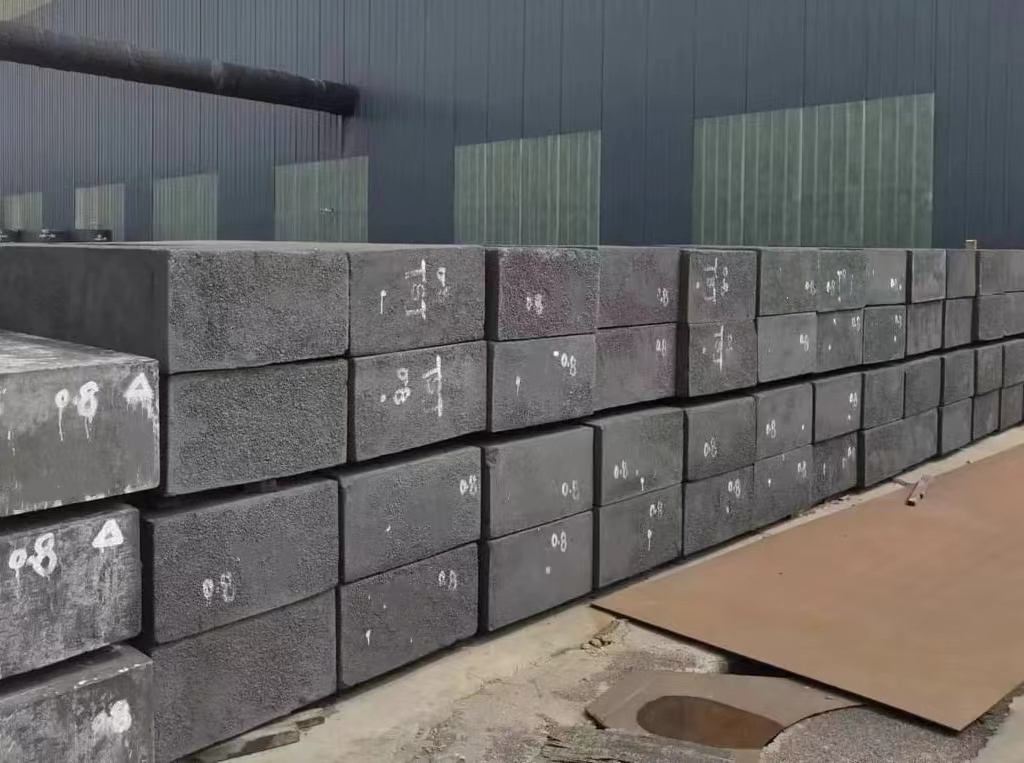El proceso de producción de bloques de grafito incluye la mezcla de materias primas, el prensado, el tostado, la impregnación y la grafitización. Veamos con más detalle cada paso de la producción.
Índice
ToggleMaterias primas
Incluye el coque de petróleo, el coque de aguja y el alquitrán de hulla. El coque de petróleo es carbón y suele tener un bajo contenido en cenizas. Es la principal materia prima para fabricar productos de grafito artificial. El coque de aguja tiene un bajo coeficiente de dilatación térmica y se grafitiza fácilmente. El alquitrán de hulla se utiliza como aglutinante y agente de impregnación.
Mezclar y amasar
Los trozos grandes de coque de petróleo calcinado y coque de aguja se trituran, se muelen y se tamizan. A continuación, se utiliza una cierta cantidad de aglutinante para mezclar y homogeneizar para su uso.
Moldeo
La pieza en bruto amasada se extruye en forma rectangular en el equipo de moldeo. En este momento, el producto no solo tiene forma y tamaño, sino también cierta densidad y resistencia.
Asado
El ciclo de tostado es relativamente largo, generalmente de unos 22-30 días. Durante este proceso, el alquitrán de hulla de la pieza bruta verde se coquiza y se elimina 10% de la materia volátil. Las propiedades físicas y químicas del grafito en bruto cambian, y la densidad y la resistencia disminuyen. Además, mejora considerablemente su resistencia mecánica.
Normalmente, el grafito isostático necesita tostarse tres veces para aumentar su densidad volumétrica.
Impregnación
Este proceso consiste en introducir el cuerpo verde en un recipiente a presión y, en determinadas condiciones de temperatura y presión, el impregnante líquido se introduce profundamente en los huecos del producto. El objetivo es reducir la porosidad, aumentar la densidad y la resistencia mecánica, y mejorar la conductividad eléctrica y térmica.
Grafitización
El proceso de tratamiento a alta temperatura consiste en calentar la pieza bruta en un horno de grafitización a más de 2300 grados Celsius. Convertir el carbono amorfo en una estructura cristalina de grafito ordenada.
El objetivo es mejorar la conductividad eléctrica y la conductividad térmica de los materiales de carbono. Al mismo tiempo, mejorar la estabilidad química. Es importante eliminar las impurezas y mejorar la pureza.
Inspección de calidad
En primer lugar, golpear el aspecto para ver si hay grietas. En segundo lugar, compruebe si la densidad y la resistencia cumplen los requisitos.
Mecanizado
El producto se corta, tornea, pule, etc., y se transforma en productos acabados según los requisitos del cliente.

